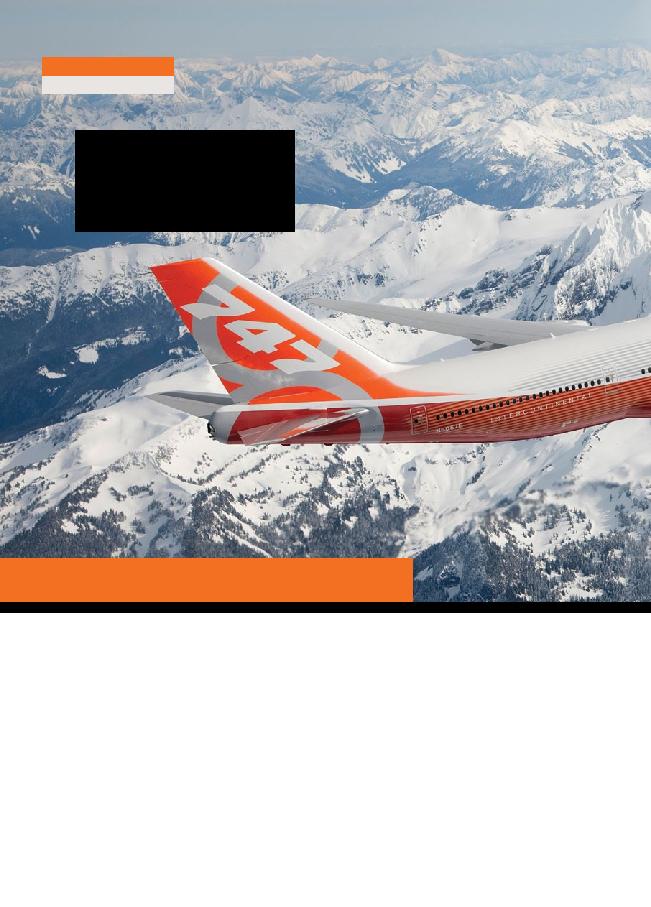
22
GA
/ Vol. 5 / No.9 / SEPTEMBER 2013
W
ith variant models compet-
ing against the conglomer-
ate of European aircraft
manufactures, Boeing has steadfastly
maintained a strategic influence
with two new versions of the iconic
B747series of aircraft.
The largest airplane in the
Boeing civilian arsenal is the 467
passenger Intercontinental airliner
and the 747-8 freighter version
of this airliner weighing in at an
A.U.W of 447 metric ton.
Reflecting back to the origins
of the 747, almost 48 years ago an
executive decision was made by
the Boeing Aircraft Company to
proceed with the development of
their 747 programme incorporating
the design from a proposed
tender to manufacture a heavy
lift airplane that might have be
suitable for the requirement of
the U.S. American Military.
It took a further two years from
that decision to implement the
B747 programme and for the first
747 Jumbo Jet aircraft to appear
from the factory assembly line.
Three years further since the
first 747 entered into service for Pan
American Airways over 1 million
passengers had travelled on the
fashionable Jumbo Jet airliner.
Another era in jet air travel
was born. As the global village
was expanding, more and more
passengers were travelling in
the iconic B747 Jumbo Jet.
But by the mid `70's Boeings
dominance was challenged by the
emergence of the Airbus development
and the A300 airliners. This was
followed later by the development
of A340 regime airliners clambering
for market share in the long haul
wide bodied descriptions of aircraft.
Boeing countered this challenge
for supremacy in the skies with
their 747-400 series. Airbus not
to be outdone announced in 1990
their intention to build the world's
biggest commercial airliner and
hence the 550 passenger capacity
A380 came into existence to break
the dominance Boeing had in the
Ultra High Capacity (UCHA)
segment of airline transport.
While Boeing will always
be in the hunt for a commanding
share of passenger carrying
capacity, and working together
with customers and applying the
innovative new technologies of the
787 Dreamliner, Boeing created
the 747-8 family. In fact, the
designation 747-8 was chosen to
show the technology connection
between the 787 and the new 747-8.
Boeing can claim their 747-8
Intercontinental is the only jetliner
in the 400- to 500-seat market,
stretched by 5.6 m (18.3 ft) from
the 747-400 to provide 467 seats
in a three-class configuration and
a 14,815-km (8,000-nmi) range.
Using 787-technology engines, the
airplane will be quieter, produce
lower emissions, and achieve better
fuel economy than any competing
jetliner. The 747 Intercontinental
provides nearly equivalent trip
costs and 13 percent lower seat-
mile costs consuming 11% less fuel
per passenger than the 747-400,
adding 26 percent greater cargo
volume into its belly freight hold.
Seemingly demand by
Airline News
by Robin Rabec
BOEING
747-8
Entry into the world of "Heavy" aircraft economics finds Boeing
Airplanes maintain a dominant role in the structures of airline fortitude.

